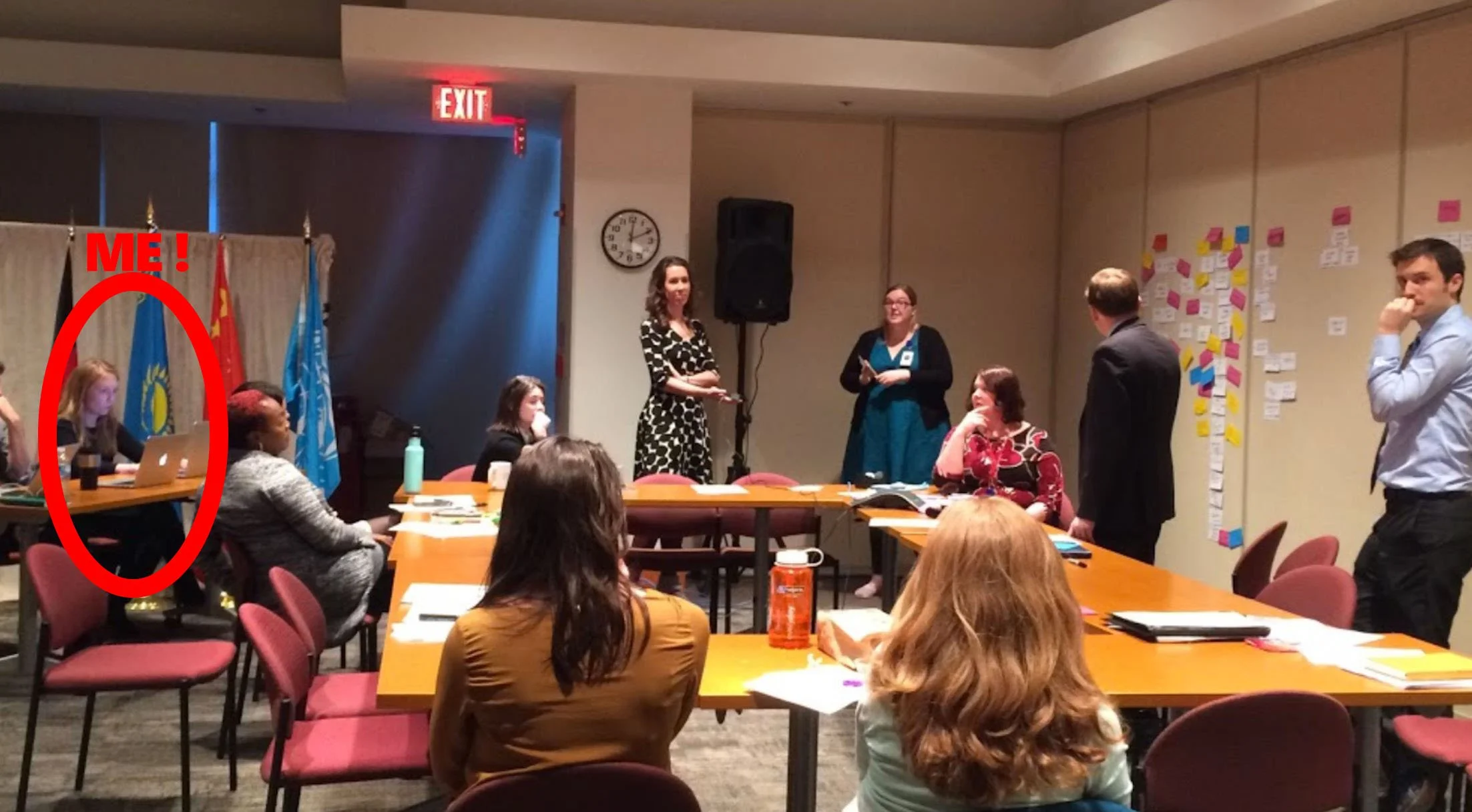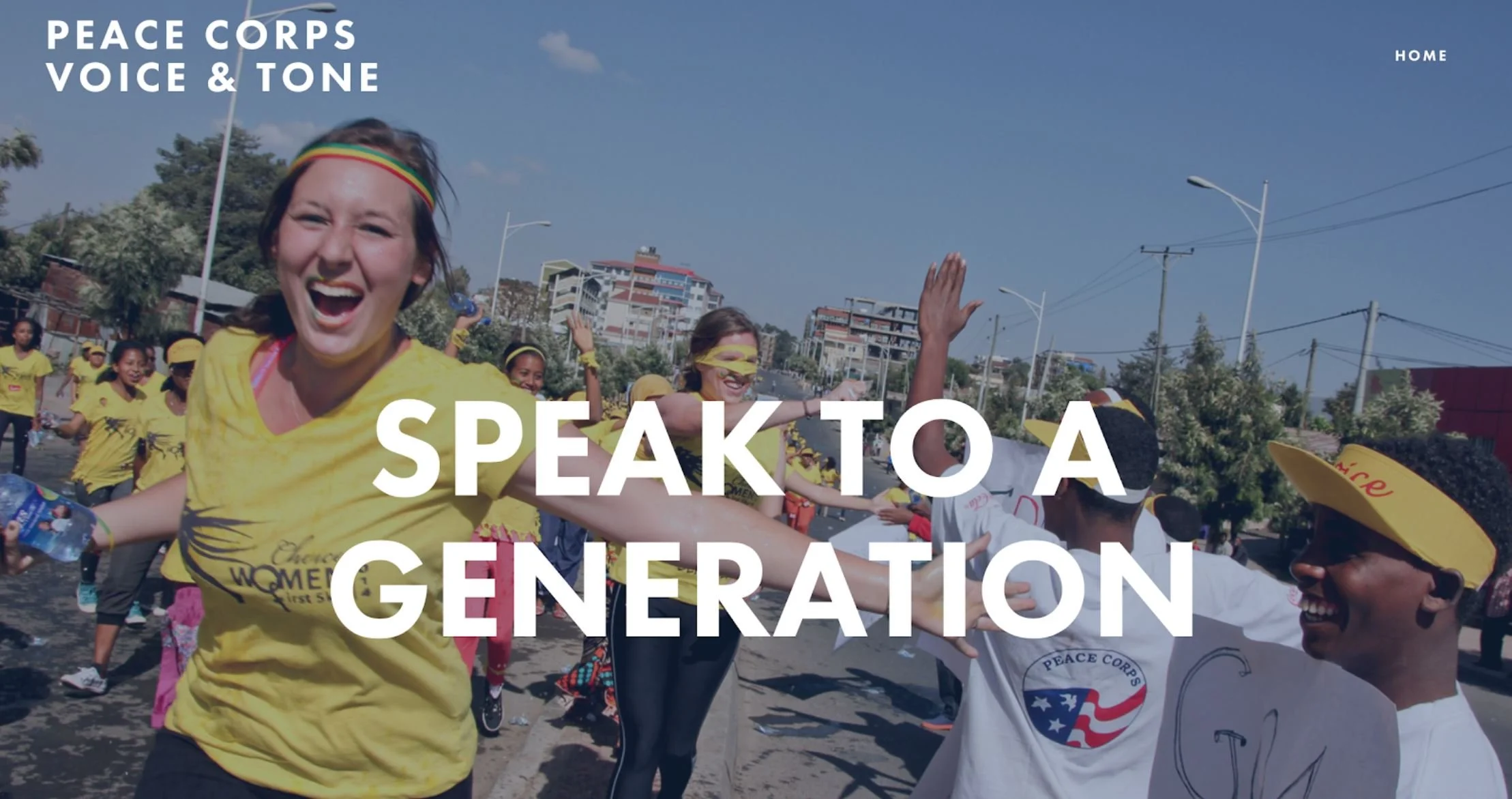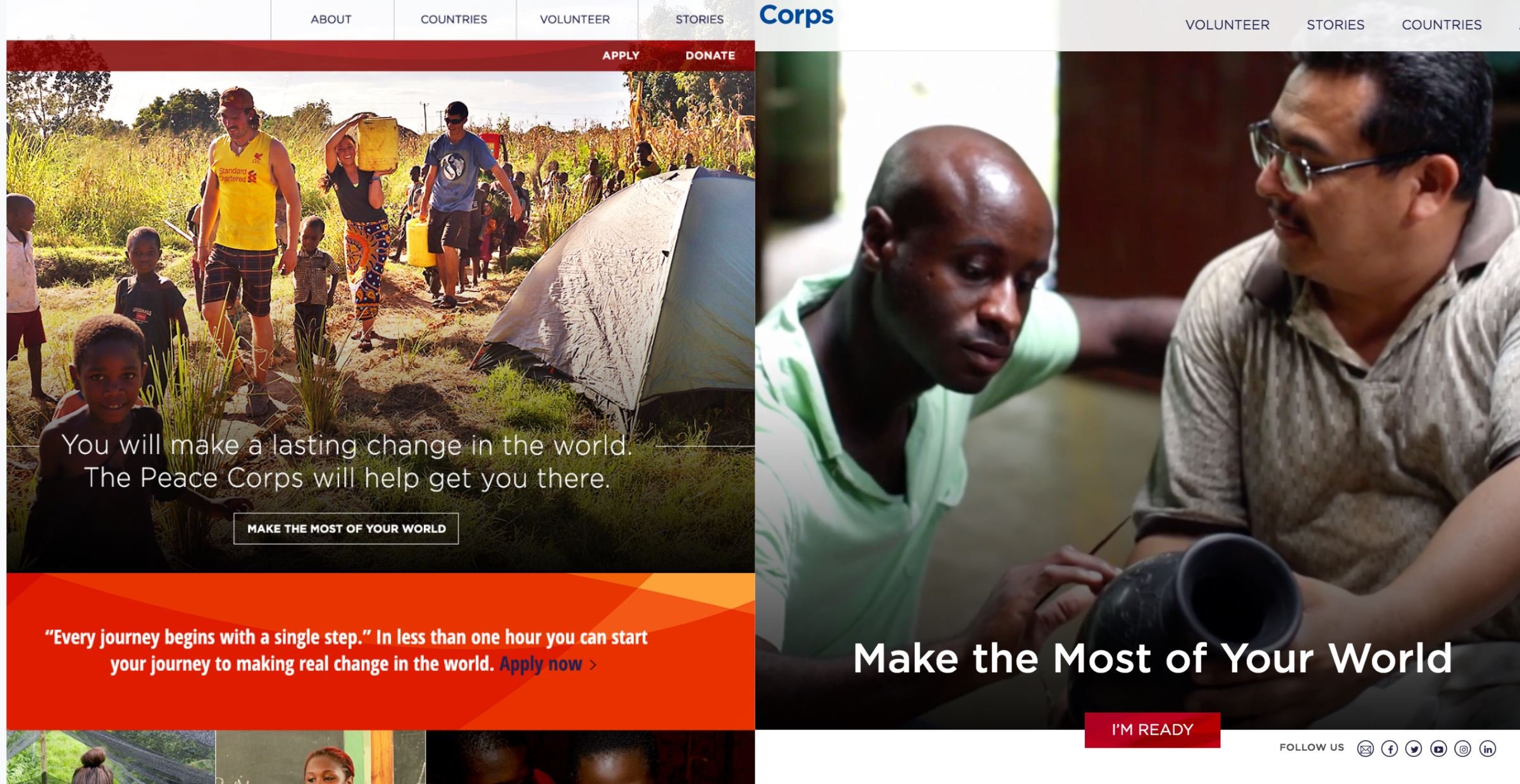Project: Peace Corps Website redesign
So many stakeholders, so little time.
Objectives
Back when my agency team began this project, Peacecorps.gov was long outdated. The visuals were dusty. Their CMS was downright broken. Their site content was dull and sounded too bureaucratic. And with a shiny new brand in tow by a Major Agency, they needed a complete website overhaul, and fast.
Oh and then there was this other minor issue: more than 70 Peace Corps websites in the countries where they do their work - all managed by individuals doing the work in those countries, and with little-to-no oversight or guidance from the larger Peace Corps org.
Our team’s objectives for this large project were:
- Design a more intuitive and compelling information architecture for peacecorps.gov.
- Create a compelling new visual story with the redesigned website.
- Find a way to bring those ~70 external sites under the Peace Corps brand umbrella.
- Figure out what content could stay, what needed to go, and what needed some love.
- Develop editorial workflows for a large team of content contributors.
- Execute actionable content with new brand guidelines.
The stuff up there in bold? Those were my responsibilities.
Constraints
Time
We had very little of it. Peace Corps has a hard deadline for launch, only a few months out.
Thin brand voice guidelines
The branding work that the Major Agency had delivered was extremely high-level and not really actionable for a team that lacked the many copywriters it needed to meet the deadline.
Tech subcontracted
Our agency team was used to working with in-house developers, and this was the first time for many of us working with an external firm. This meant finding the communication sweet spot for a team we hadn’t met.
Budget
Surpriiiiiiiise! Every consultant’s tiny violin. Peace Corps didn’t have the budget for the amount of content work that needed to be done. So we would need to be lean. Like, really really lean.
Mistrust of Big Brother
We would need to be extremely careful in how we worked with the site authors in countries in which Peace Corps operated. The people in the field were often resistant to what felt like intrusive communication policies handed down from on-high, so we’d need to navigate that dynamic.
Approach
Not only did I have to sort through existing content and figure out what needed to stay, what needed to go, and what we still needed in general; I had to think through future content from many contributors, and how it all fit together.
In order to help make future content writers successful and keep them on brand, I had to know what they were up against. Spoiler alert - it was fear and insecurity in future Peace Corps recruits (and understandably so).
Research
To deliver the best writing guidelines, I needed to first understand our target audiences. The most important target audience? Potential recruits.
Most of our limited research budget was spent on running (very useful but expensive) workshops with dozens of stakeholders, both in-person and across the world. These workshops not only aimed to inform our team of stakeholder needs and those of our end users, but also to make sure stakeholders felt included and heard.
One of our many workshops with the Peace Corps stakeholders.
Since the rest of our research budget was mostly nonexistent, I did a deep dive into social media and observation to get a better feel for how people were interacting with Peace Corps and talking about it. Finding in-the-wild conversations and concerns that would affect our primary users (namely, insecurities and fears around applying to the Peace Corps) deeply informed my guidelines for the Peace Corps content writers.
Content Audit
On my lead, my team conducted an extensive content audit of all existing peacecorps.gov content, along with a top-level survey of content that existed on the in-the-field websites made by the volunteers working in those countries. This massive audit became the main Source of Truth for all things content going forward - our two main client partners really dug in and developed their own internal workback schedule to get a handle on content still needed.
Actionable content guidelines
After learning some of the key concerns and insecurities for the Peace Corps' top priority audience, I developed an initial one-pager website that all Peace Corps content creators could access, with 10 concrete guidelines to consider when writing in the Peace Corps voice and tone (specifically for web content; we didn't have the scope or budget to consider additional channels).
Header for the voice and tone guidelines for Peace Corps.
While the voice and tone one-pager was important, more important were the specific guidelines built right into the content planner tool we used to gather content from all contirbutors (a product conveniently called GatherContent). In this tool, we set up contextual tooltips to guide content creation (like max header length, tips for scannability, etc), along with a persistent link to the voice and tone one-pager for reference.
Governance and change management
Armed with massive amounts of information about stakeholders and contributors from our discovery workshops, I built out a content workflow directly in our content planning tool (I call it a pre-CMS, since we wouldn't have the technical solution until way late in the game). So instead of relying on our recommendations as written in some document somewhere, we built our governance model directly into the planning tool, complete with:
- Appropriate roles with differing permissions, assigned to the right people.
- An editorial calendar with baked-in project timelines, visible to all contributors.
- Labels for content during different stages of development.
- Clear in-tool guidance around what to do next. For example, a contibutor who just entered their content into the tool would see that they must assign to a reviewer before saving.
Original brand spec for homepage content on the left; the final version on the right, after using the content guidelines we developed for them.
As is the agency way, it’s difficult to gauge long-term success or outcomes of a project. But I am happy to say that we accomplished our project on time, only a little over budget, and with enthusiastically happy client partners. Our client content creators were able to leverage the voice and tone guidelines and turn the brand specs into a compelling web experience with content that spoke to their primary audiences.
Maybe most importantly, we were able to transfer the process we implemented in GatherContent to our final CMS solution, ensuring a smooth transition for the Peace Corps contributors who got used to GatherContent and those processes.
This was a huge project that I have written and presented on a few times, and I’ve gone into a few different levels of detail. To see more about my work on this Peace Corps project, see my UX Booth article that focuses on the nitty-gritty of the content work, and also this presentation deck, where I walk through the process with a focus on the content guidelines for authors.


